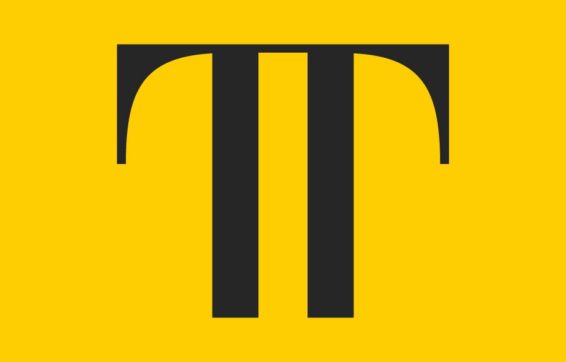
Back to School with ROAST’s SEO team: Tools, Tech and Trends
On the 21st of October, the ‘Back to School’ webinar returned for an SEO special. The panel of SEO experts sat down to explore the latest Google updates that have happened across the SEO landscape since February 2021, as well as looking into rumoured upcoming updates.
The session was led by SEO Account Executives; James George and Aimee Metcalf, with an insight-packed Q&A to finish joined by Paige Hobart, Head of SEO and Alice Logan, Senior SEO Manager. Within the 45 minute update, they plunged into the main 2021 Google updates including the Google Link Spam update, the Google Product Review update, the Google Title Rewrite update, along with rumoured updates for SEOs to look out for to pre-empt these changes.
Catch up on the session here, and find the key findings summarized below:
What is a Google update?
“A Google Update, is the term used to describe a change affecting how rankings are calculated by the search engine, Google.” Any change that Google uses to retrieve data from a webpage and display or deliver relevant results.
Google changes its search algorithm around 500-600 times a year, with most going unannounced, sometimes Google is prone to announcing the larger updates.
Aim of Google updates:
General aim is to improve →
- The relevancy and quality of the search results
- To surface the most accurate and secure pages for users
- Present relevant and authoritative content to searchers.
What is the big deal about Google updates?
Awareness of such updates helps SEOs for a variety of reasons, including keeping in line with SEO best practices, improving your site’s rankings and understanding any reasons behind any site performance shifts.
If you are penalized by an update, you would notice a drop in organic rankings, whereas if you are rewarded by an update, you would notice a rise in organic rankings.
Keep up with Google algorithm updates:
An important note is to never wait for Google to announce its updates, it is best to:
- Regularly check your sites organic traffic
- Keep an eye on the search rankings for your target keywords
- Use external Google algorithm update trackers and websites.
February algorithm update → Passage Ranking Update:
What is Passage Ranking?
Google changes the way they use passages, snippets and sections of page copy to rank search results. Google is now able to identify different topics in long-form content to rank.
Once rolled out globally, it is estimated to impact 7% of all search queries.
Checks and recovery tips:
- Monitor rankings for long-tail keywords. Passage ranking saw a larger impact on pages with long-form content.
- Google has given no official guidance on how to optimise for passage ranking, so look to optimise content that Google will favour, such as through creating unique content and using structure, which will allow you to appear for SERP features.
- Use tracking tools such as SEMrush, Ahrefs, and Google Keyword Planner to target long-tail keywords of competitors, as well as targeting SERP features.
March algorithm update → Mobile First Indexing:
This means that Google is now using the mobile version of a website for ranking and indexing purposes.
Why are they doing this?
The goal of this is to provide an identical experience on mobile and desktop for the user.
Some of you may be thinking that this update happened already? Originally, it was due to roll out in September 2020, however, Google pushed this back. It is worth noting that Google has already moved over 70% of sites over to mobile indexing in 2020.
Google have said themselves that if your site purposefully serves less content on the mobile version of a page, you will likely have experienced a drop in organic traffic due to this update.
Checks and recovery tips:
- Check if Google considers your URLs to be mobile-friendly – you can check this through Google Search Console.
- Use a responsive web design.
- Use identical content on every device
- Lastly and arguably most importantly, optimise mobile page load time.
March update → Featured snippets Drop and Recovery:
What is a Featured Snippet?
A selected search result above organic results, aiming to answer user queries immediately. These results feature relevant page content as well as the page URL.
Around February 18th, SEOs noticed a historic low of Featured Snippets which spanned over multiple industries. SEMRush conducted a study on this and found that by March, most results on mobile had experienced a full recovery, with desktop following shortly afterwards.
Checks and recovery tips:
- Use tracking tools to measure Features Snippets results:
- Optimise page content for Featured Snippets:
- Look to take competitor snippets. Use long tail keywords in your H2s to break up the page content.
April algorithm update → Product Review update:
Google launched this update with the goal of ranking well-researched and insightful content over brief-product summaries. Google stated this was done as they aim to share the most useful and helpful information possible to users.
What types of sites should be concerned about this update?
Sites that publish product reviews should be wary, and should check their organic traffic and rankings from April 8th. Any sudden spike or drop in search traffic occurring on or around that period, likely indicates the site was impacted by such an update.
Checks and recovery tips:
- Does your content express expert knowledge?
- Is your content unique?
- Are you comparing your content to competitors and previous models?
- Does your content help consumers make wise purchasing decisions?
May algorithm update → MUM
MUM – ‘Multitask Unified Model’ is an ongoing update, so there are various developments being witnessed by many, with more to come.
What does this mean?
MUM is Google’s natural language processing technology, helping Google to understand complex search queries.
How to prepare for MUM?
As MUM isn’t fully rolled up, it is likely to see impact to SEO over the coming months through development of new tools and improvement to existing tools. Natural Language Processing (NLP), allows Google to understand complex queries. It may be beneficial to target long-tail keywords to optimize for this. It is important to use page schema to optimise for result types, as this will help google to understand what your content is about.
What is the difference between a broad update and a core update?
The difference between a broad update and a core update is that the core update is not targeted, it is more that Google is updating the algorithm to refresh how they want webpages to be designed; it is a way for them to review their assessment process.
These updates take place a few times a year, with the last core update taking place in December 2020.
June algorithm update → Broad update and a core update:
When did this broad core update happen?
The update occurred in two parts due to the large size of said update, the first being in June 2021 and the second being in July 2021.
Checks and recovery tips:
It is hard to see whether you have been impacted or not. Firstly, to see if you have been affected, check Google Search Console for any increase in traffic or improvements in position. If affected, look at how to improve your position with these questions:
- Is the quality of your content high? How original and helpful is the information you provide? Are your page titles and headers descriptive and helpful?
- How trustworthy is your site? Is the content trustworthy, and does the site contain errors?
June/July algorithm update → Link Spam
Google is now improving at spotting unnatural links. These unnatural and spammy links are now being reassessed by the algorithm in order to fight poor-quality content from ranking high in the SERP.
This update rolled out over two months, June and July. If you wanted to see if you had been impacted, look for any sudden spike or drop in organic traffic and rankings from this time period.
Interestingly with this link spam update, Google has put an emphasis on sites that handle links where an exchange of value is involved.
Checks and recovery tips:
- Ensure your site’s links are natural and in accordance with Google’s guidelines.
- Affiliate linked are properly tagged
- Carry out a backlink audit, look for any signs of a sudden uplift in referring domains (unrelated to PR activity) .
June algorithm update → Page Experience:
What is page experience?
- Google assesses several signals that create the optimal browsing user experience (UX).
- These signals are core web vitals which form the technical baseline of site health.
Core web vitals –
Mobile Friendly: A page must be compatible with mobile devices.
Safe browsing: Any security issues on a webpage will disqualify a ‘Good’ status.
HTTPs: A page must be served over a HTTPS protocol.
Ad experience: Page ads must not be interrupted or disturbing as this can interrupt UX.
How to assess your page experience?
Google provides various tools that are very useful in looking at your page experience.
- Google Search Console: Provides a page experience report that uses field data to identify groups of URLs with speed problems.
- Lighthouse: Automated web auditing tool used to investigate UX using field data.
- PageSpeed Insights: This Google tool is used to measure website speed using both lab and field data.
- Google Chrome Ux Report: Provides measurement of page experience for real world users.
Checks and recovery tips:
- Google recognises page experience as a ‘Tie-breaker’ and will not override content as a ranking factor.
- Check any significant traffic drops between June and August against the page experience report. Do any drops/improvements coincide with action to the site?
- Use page experience report and core web vitals to identify groups of pages that require attention. Use PageSpeed insights links to identify solutions and areas of opportunity.
August algorithm update → Title Rewrite
Google is no longer simply using HTMl title tags to generate titles in SERPs. Instead, Google is now often replacing the text with a page’s H1 tag.
Why have they done this?
To enhance the relevancy for searchers. Google replaces a page’s title in the SERP when it believes it isn’t describing a page as well as it could in the title tag.
Impacted by the update?
Look out for a fluctuating CTR from August 16th. If you have noticed a drop; or a rise, in your CTR from August 16th, check the title Google is serving in the SERP.
Checks and recovery tips:
- Avoid half-empty titles.
- Avoid inaccurate titles.
- Now aim for H1s to reflect the ideal title in the SERP.
Upcoming updates
Big moments:
Google is reporting breaking news in real time. Big Moments relies on machine learning capabilities added to Google News in 2018. They aim to replace where users would normally go to find their news.
Eco-friendly filters:
This is part of their plan for green initiatives. As part of this initiative, users can now find carbon emissions information for flights, can be shown sustainable appliances when shopping for energy intensive appliances, as well as information on the most fuel efficient routes being rolled out in 2022.
Persistent search:
Two new features are going to be involved in this update:
Journey: Previous searches grouped into archives for users to re-visit.
Side Panel Search: SERP results remain visible while on a web page.
Takeaways:
Stay ahead of the Google updates:
Ensure your site is always adhering to Google’s core guidelines, as there is no way to predict a Google update.
- Create high quality, user friendly content.
- Adhere to Google’s E-A-T guidelines:
- Expertise
- Authoritativeness
- Trustworthiness
If you’d like to chat through any questions with our team, get in touch now. Alternatively, check out our ‘Back to School’ event with Paid Media that took place last month.






